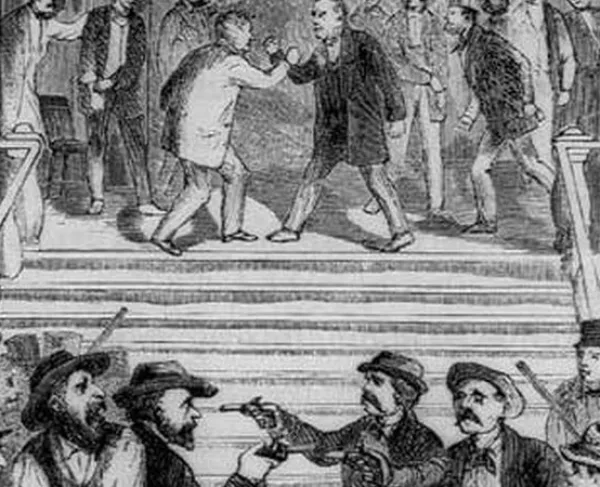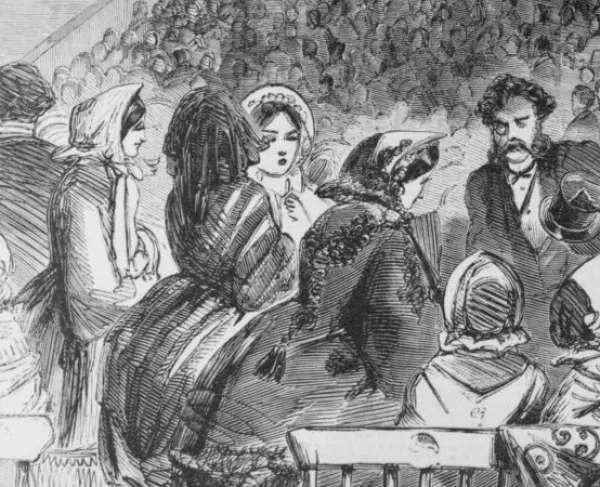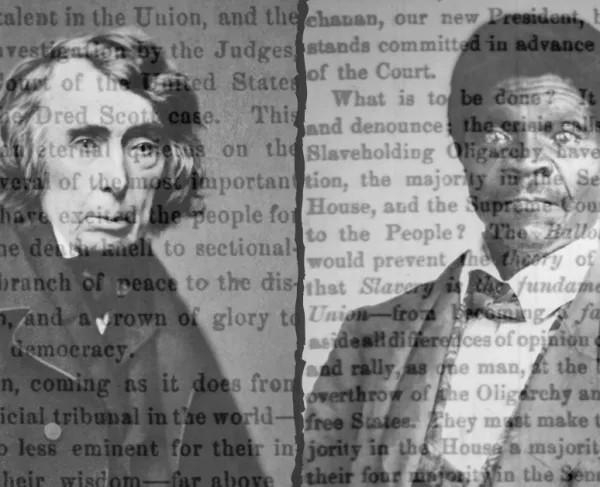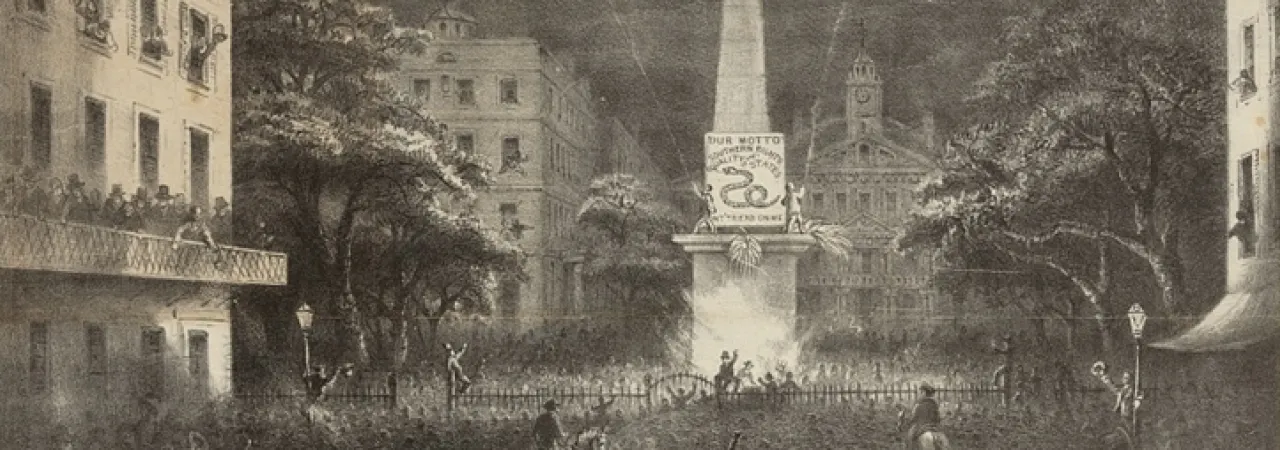
The Election of 1860

In 1860, Abraham Lincoln completed his rise from relative obscurity by capturing the Republican Party's nomination for president. His skill as an orator had captivated the North, while his views on slavery had infuriated the South. Lincoln's path to the White House was cleared by the discordant Democratic Party, whose northern and southern factions could not agree on a candidate. Stephen A. Douglas ran as the candidate of the Northern Democrats, and John C. Breckenridge ran as the candidate of the Southern Democrats, while a third-party candidate, John Bell, further complicated matters. Fewer than four in 10 Americans voted for Abraham Lincoln in November 1860 -- he wasn't even on the ballot in nine Southern states -- but it was enough to win. Lincoln carried eighteen of thirty-three states, sweeping Northern population centers, and won 180 of the 303 electoral votes. His election outraged the South and triggered the Secession Winter.
Secession
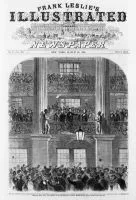
On December 20, 1860, six weeks after Lincoln's election as president, South Carolina's leaders met in the banquet and concert hall of the St. Andrew's Society and voted to secede from the United States. Thereafter, the hall became known as Secession Hall. President James Buchanan declared the act illegal, as did President-elect Lincoln, but it did not quell the tide. Mississippi was next to secede, on January 9, 1861, followed the next day by Florida and by Alabama the day after that. By February 1, Georgia, Louisiana and Texas had also seceded. But the states of the upper south remained in the Union, with Virginians voting two-to-one against secession just eight days before the bombardment of Fort Sumter.
Gearing up for War
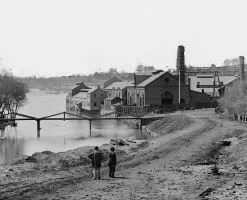
As war clouds gathered, military leaders in both the North and South tried to prepare for the conflict. Finding soldiers was easy, as tens of thousands on either side rushed to join the ranks of the respective armies, but ramping up the machinery of war presented additional challenges. In the North, the city of Pittsburgh, Pennsylvania, prospered, as its heavy industry was called upon to provide the Union Army's big guns and, eventually, ironclad warships. The South had the Tredegar Iron Works in Richmond, but most of its industrial establishments were small and local. In terms of capital invested in business, the amount invested in all of the southern states combined did not match that of the states of Massachusetts, New York, or Pennsylvania, individually. The war spawned the development of new inventions and sped up the growth and refinement of established technologies, such as weaponry, photography, and more domestic items like sewing machines.
A Problem in Charleston Harbor
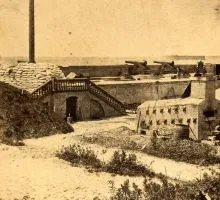
Six days after South Carolina seceded, and under cover of darkness, Maj. Robert Anderson transferred his small garrison from the coastal Fort Moultrie to Fort Sumter, located on an island in Charleston Harbor, to secure that important bastion for the Union. In 1861, the newly established Confederate government focused its attention on the fort, demanding Anderson's withdrawal. Despite dwindling supplies, Anderson refused to leave. A northern steamship, the Star of the West, attempted to deliver reinforcements and supplies, but was shelled and repulsed by cadets from The Citadel. Tensions continued to heighten as winter became spring. After his inauguration, Lincoln decided to resupply the fort, despite Southern insistence on withdrawal, including a looming deadline. When the Confederate demands went unmet, shore batteries opened fire and the shelling of Fort Sumter began on the morning of April 12, 1861. Outgunned and outmanned, Anderson surrendered after 34 hours of bombardment that left the fort a burning hulk. The Civil War had begun.
Key Players
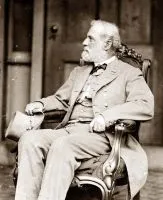
From Presidents Abraham Lincoln and Jefferson Davis on down through their cabinets and the ranks of their armies, the key players in the sectional dispute could have no idea what the hardening attitudes of both sides would lead to. Only the most extreme advocates on either side expected all-out war. Many of the political leaders served with each other in Congress, and many of those who would face off as top military commanders went to West Point together, or served side by side in the Mexican War. Loyalties were torn right down to the family level, including the family of Abraham Lincoln's wife, Mary Todd Lincoln, a Kentucky socialite whose half-sister's husband became a Confederate general. Countless Southerners who were otherwise loyal to the Union, including Robert E. Lee, would eventually have to choose which side to support.
Learn More - The Gathering Storm: Antebellum America | The Gathering Storm: The Slavery Issue
